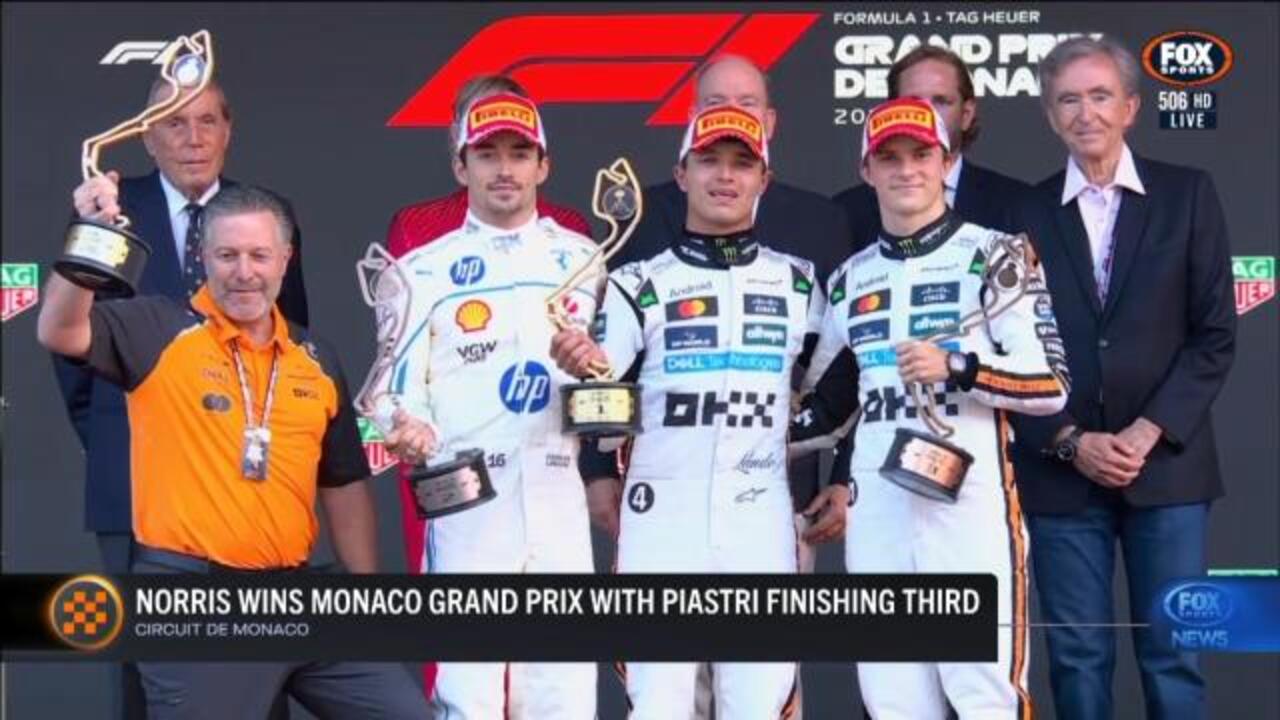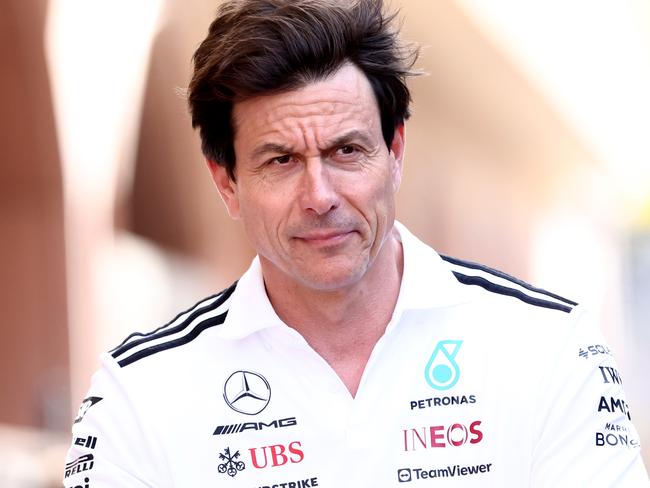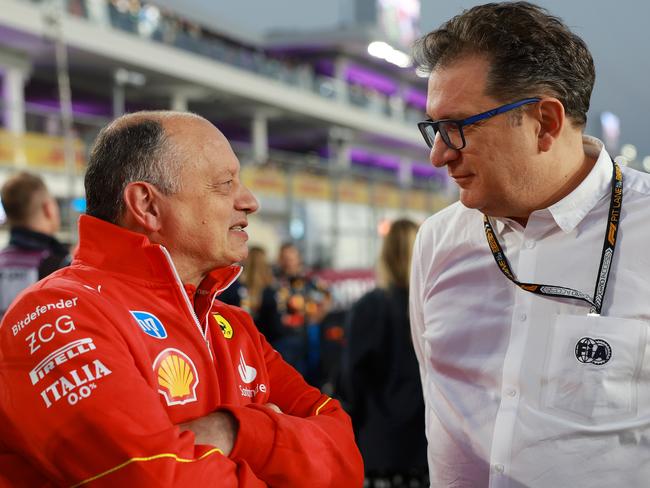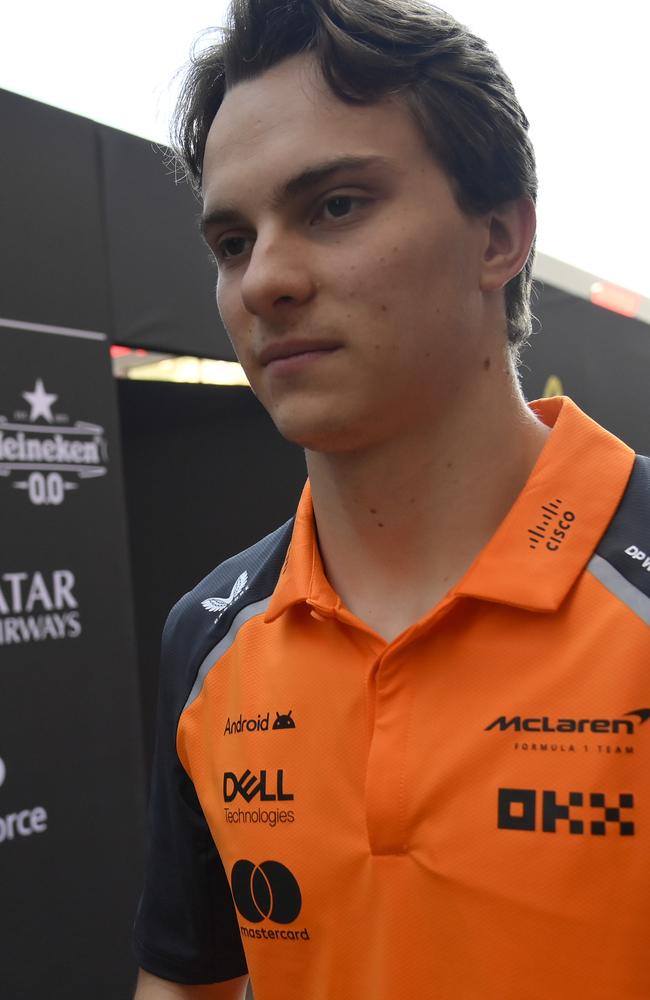A ‘game-changing’ regulation for F1 set to be introduced for the next Grand Prix in Spain
Ferrari is set to be the biggest beneficiaries of a regulation change to be introduced for the Spanish F1 Grand Prix. Reasons for the change, how it will be tested and reaction from the paddock here.

F1
Don't miss out on the headlines from F1. Followed categories will be added to My News.
Ferrari boss Fred Vasseur hopes a “game-changing” regulation update being introduced at Barcelona this weekend can level the field and bring the Scuderia back into contention alongside McLaren and Formula One championship leader Oscar Piastri.
The FIA introduced a technical directive in January that they would clamp down on front wing flexing at the Spanish Grand Prix, reducing the allowed flex from 15mm to 10mm under 100kg of load.
F1 bosses all agree it is Ferrari that is set to be the biggest beneficiaries of the regulation change, while McLaren and Mercedes are understood to be the teams at most risk of being impacted by the required changes.
“I think Barcelona is on the calendar of everybody in the paddock with the new regulation for the front wing,” Vasseur said.
“We are working on it for ages now and this can be a game-changer for everybody because we don’t know the impact on every single team.”

Mercedes boss Toto Wolff expects the change to favour Ferrari more than any other team on the grid.
“I think what we have seen is that Ferrari was probably most conservative on flexi-wings,” Wolff said.
“What it’s going to do on the pecking order is something we need to look at.
“I’m not sure it will [change things], but another angle of curiosity and I don’t know how it’s going to go.”

Red Bull team principal Christian Horner predicted the new directive would be a “significant change” this weekend while the high speed corners of Barcelona would favour his outfit and four-time world champion Max Verstappen.
However McLaren’s Andrea Stella, whose team holds a 172-point constructors’ championship lead with Piastri three points ahead of teammate Lando Norris in the drivers’ championship, has previously said front wing flex was not the reason why the Papaya outfit has been exceptionally quick for over a year.

Why the change?
Front and rear wing flexibility has been a hot topic, pretty much ever since McLaren surged to the front of the grid as jealous rivals studied their car in microscopic detail to find their advantage.
The FIA clamped down on rear wing flex in China after complaints the movement created a “mini-DRS” like effect on cars with greater movement at high speeds.

Now the front wing, which impacts the downforce and overall aerodynamic performance of the cars, is under scrutiny.
FIA single-seater director Nikolas Tombazis said the changes would hopefully silence the continual complaints in pitlane by rival F1 teams.
“When championship battles become intense, teams tend to focus on each other’s cars a lot, and naturally they raise concerns and over the latter half of the (2024) season we came to the conclusion that we needed to toughen a bit more the tests for 2025,” he said according to PlanetF1.
“The 2025 regulations were designed to counteract the so-called ‘Mini-drs effect’ that became quite a talking point in the autumn of last year.
“That test was applied from the start of the season, but it soon became apparent it was insufficient.”

How will it be tested?
FIA has the power to randomly scrutinise any car during a race weekend, with Oscar Piastri’s McLaren recently targeted – and cleared – after issues were raised by Red Bull over his unique tyre and brake temperatures.
The FIA can order private testing on parts or conduct examinations in parc ferme, where cars found in breach can face race weekend disqualification.
The flexibility tests will see 100kg loads applied to both sides of the front wing, with no more than 10mm of flex allowed. When the load is applied to just one side, the flex must be no more than 20mm.

Front wing flap movement has also been adjusted, with the limit of flex under a 6kg load reduced from 5mm to just 3mm.
Tombazis has warned teams the FIA will be policing the issue strongly to end the saga of wing flexibility once and for all.
“We check the teams at various points across the season and we ask them to bring certain components along and we’ll check them in isolation and sometimes test them on the whole car,” he said.
“We frequently test in parc fermé conditions, either on Saturday after qualifying or Sunday morning, as obviously, in parc fermé teams cannot make changes to their car.
“That ensures that they’re not fitting a stiff wing for the test and running something else in the race. We also occasionally conduct checks after a race if we feel there is a reason to do so. Those tests would be static load tests, as defined in Article 3.15 of the Technical Regulations.
“Obviously it is fair for the FIA to add more flexibility tests or stiffness tests when it judges that a certain area may be getting exploited a bit too much.
“We hope it will be the last time we’ll do anything for this year.”
More Coverage
Originally published as A ‘game-changing’ regulation for F1 set to be introduced for the next Grand Prix in Spain





